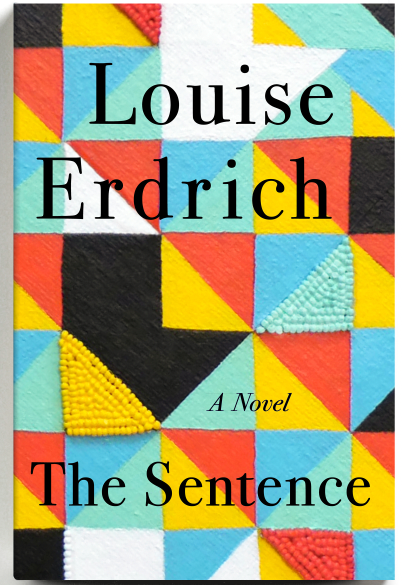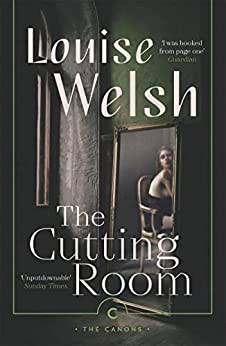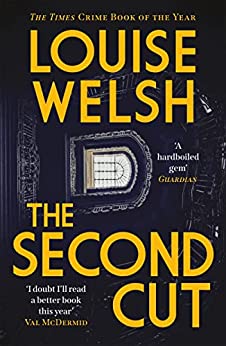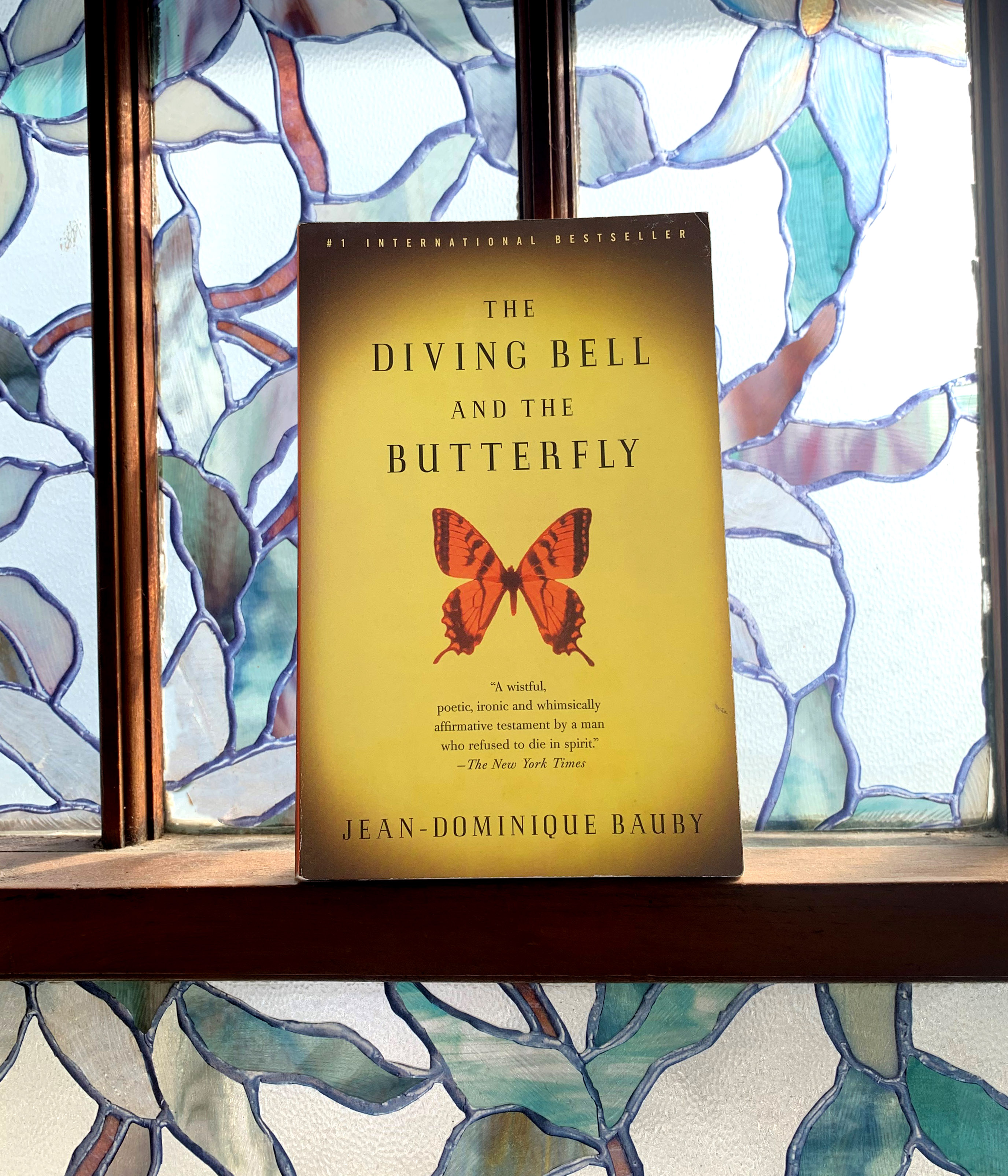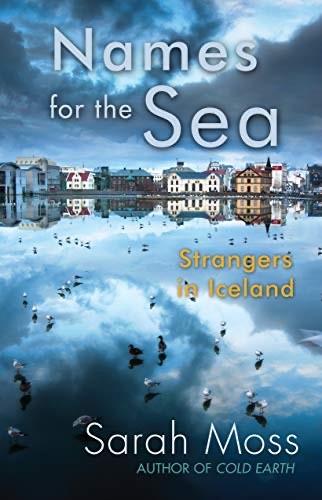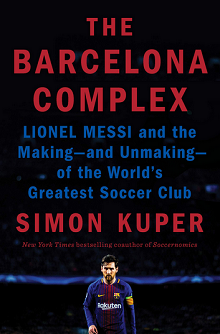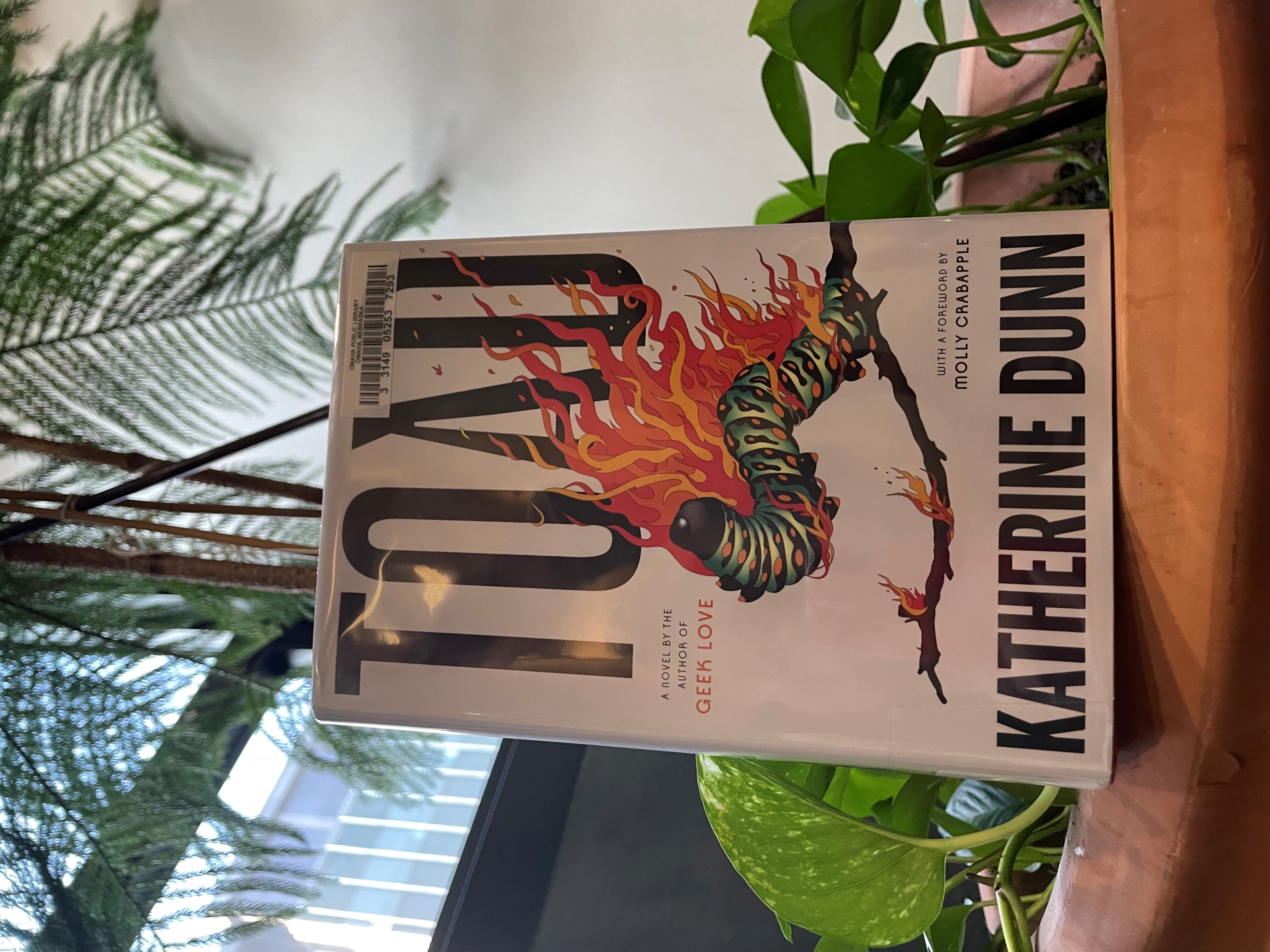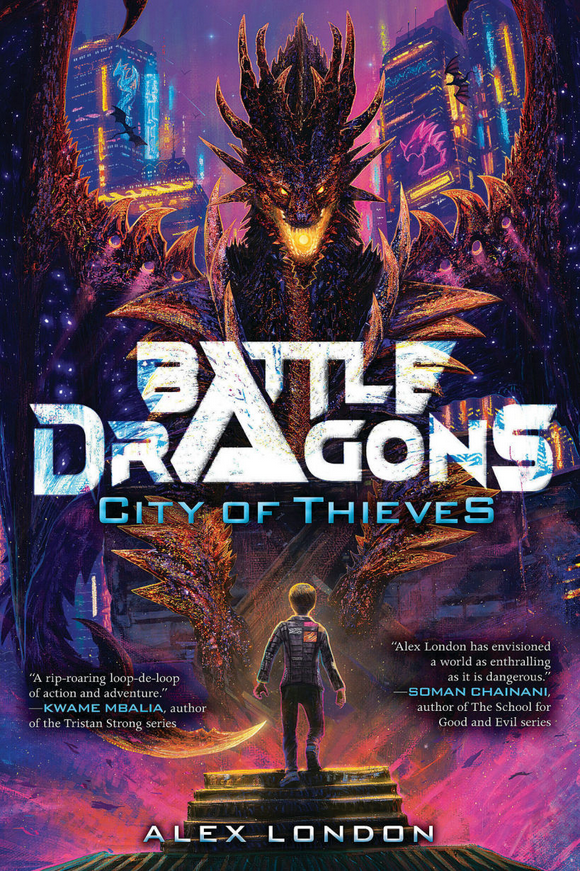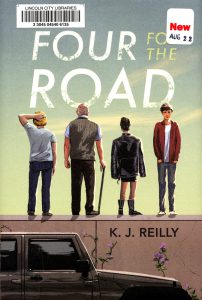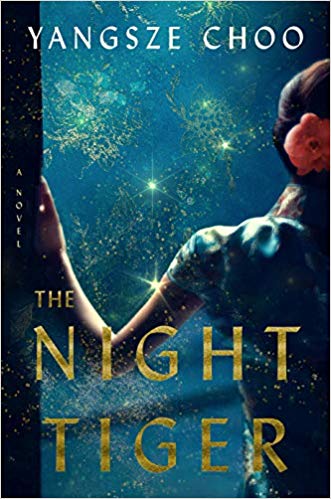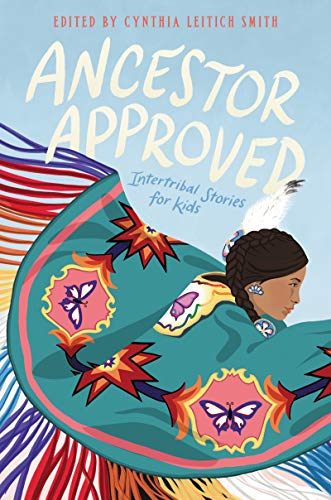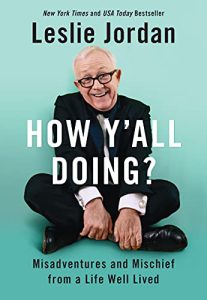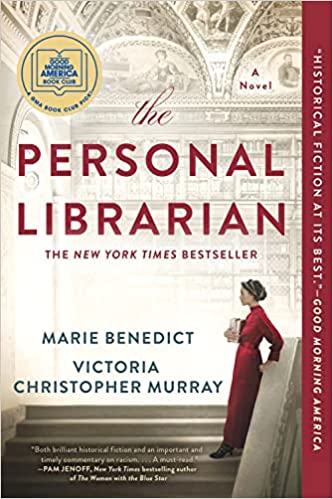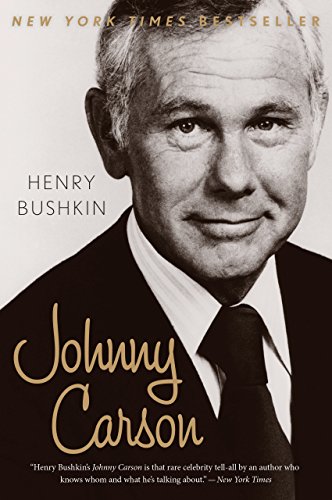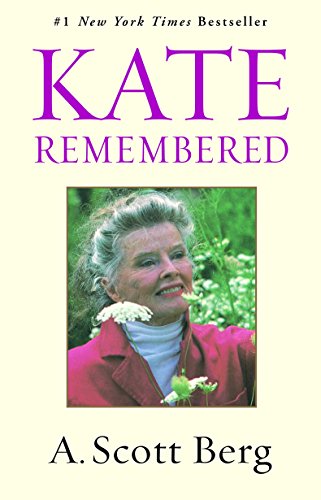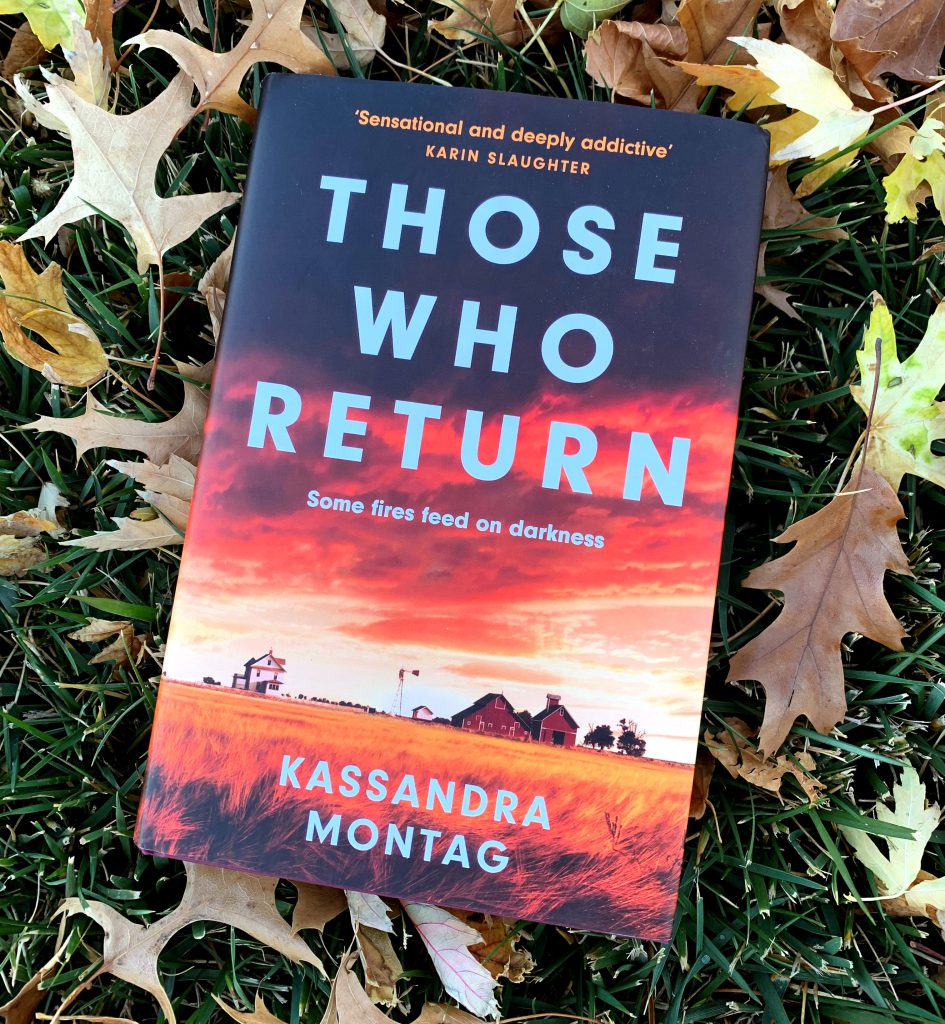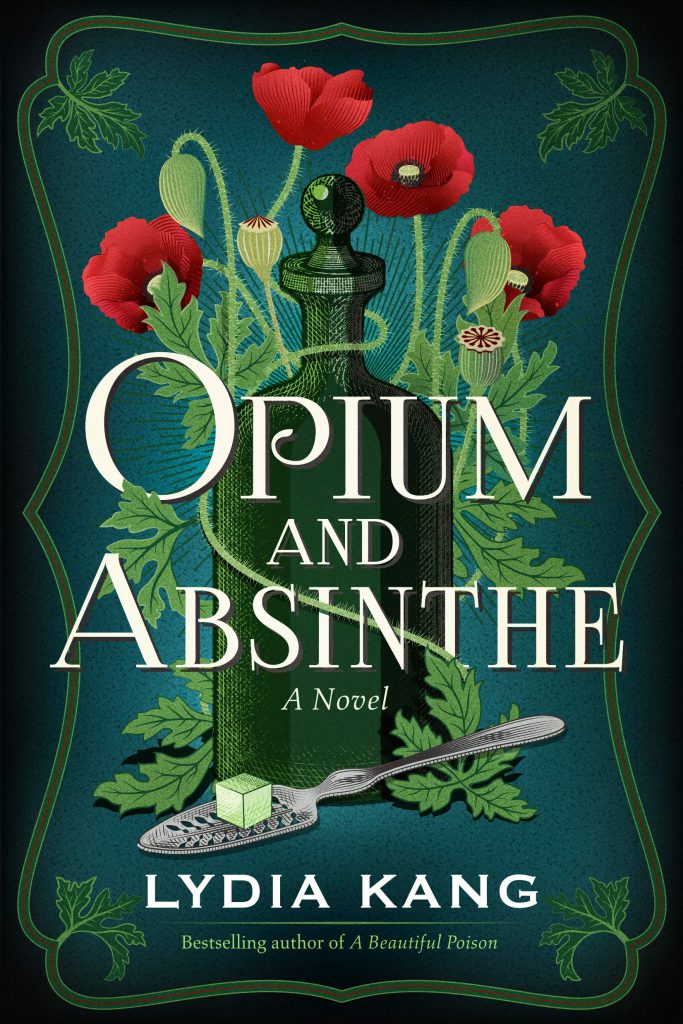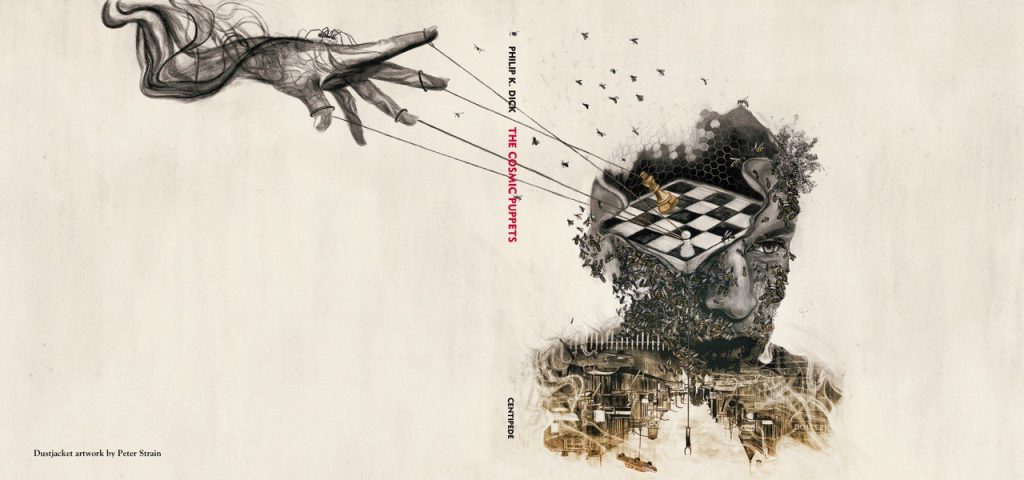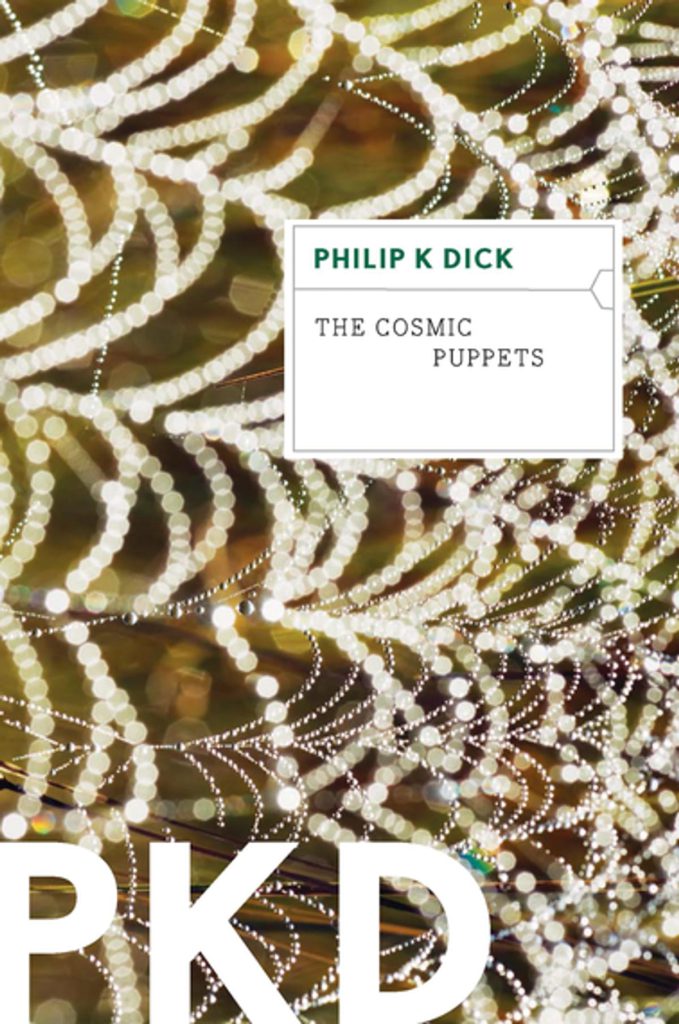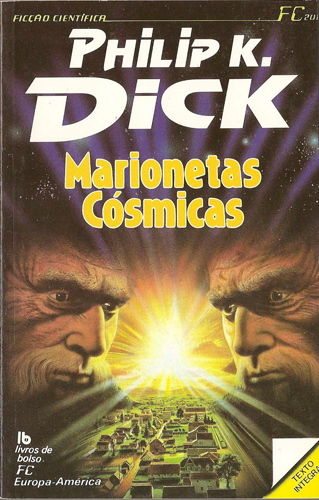Search the Blog
Categories
- Books & Reading
- Broadband Buzz
- Census
- Education & Training
- General
- Grants
- Information Resources
- Library Management
- Nebraska Center for the Book
- Nebraska Memories
- Now hiring @ your library
- Preservation
- Pretty Sweet Tech
- Programming
- Public Library Boards of Trustees
- Public Relations
- Talking Book & Braille Service (TBBS)
- Technology
- Uncategorized
- What's Up Doc / Govdocs
- Youth Services
Archives
Subscribe
Tag Archives: Friday Reads
Friday Reads: The Sentence, by Louise Erdrich
Sometimes, when authors narrate their own audiobooks, it turns out well. Even more rarely, it turns out amazingly well. I checked out The Sentence, the latest book from Louise Erdrich, from the audiobook shelf at the public library without looking at the narrator credit. I’m not sure what the hurry was—it came out in 2021 and I hadn’t read it yet. Once I was ready to listen, I saw that it was narrated by the author. This can be a real hit or miss situation, as any audiobook fan can tell you—narration is generally best left to professionals. I’m happy to share that Erdrich’s narration of her own book is fantastic, and brings new levels of appreciation for the text.
If you’re familiar with Erdrich’s work, you know that she understands her characters and their motivations deeply, and knows more about them than she puts on the page in black and white. Her narration of the dialogue in The Sentence illustrates this skill even further—each character speaks in their own distinctive way, with their own cadence and bluster or hesitation, with their own honesty and their own secrets.
The narration is so on point that I’m leading with that in this review, instead of where I would’ve expected to start: there is so much about books in this book. After a wild and tragic beginning in 2005, most of the story takes place in a bookstore starting in 2019, and that bookstore happens to be the bookstore Louise Erdrich owns in Minneapolis in real life. Erdrich herself is a character in the book—but she’s not one of the main characters. Her appearances in the bookstore, and the way patrons look for her there, are handled with comedic humility, and told through the eyes of our protagonist, Tookie, who works in the bookstore. (There’s also a ghost in the bookstore, but you should hear about that from Tookie.)
Tookie has a history, and a future, and a rich and nuanced love of books and authors and reading. Books have helped her through some hard times, and help her connect with other people, and find a way of living. (I ended up checking out the print book, also, so I could refer easily to all her book recommendations to bookstore customers.) The candid descriptions of customer interactions are refreshing, surprising—and validating. We are rooting for Tookie, and all her co-workers, especially since we know what’s ahead for the world and especially for Minneapolis.
Readers new to Erdrich may have heard that she handles heavy topics—she does! And no one handles the heaviest of topics in a more readable, listenable way. The Sentence deftly, compellingly, tackles every subject that one book-selling indigenous woman in Minneapolis might find in her life or her history—including her experiences in the summer of 2020.
Erdrich, Louise. The Sentence: A Novel. HarperCollins. 2021.
Friday Reads: The Cutting Room and The Second Cut by Louise Welsh
Looking for Scottish authors in preparation for an upcoming trip, Megan at Francie and Finch pointed me to Louise Welsh, a writer and Professor of Creative Writing at the University of Glasgow. Both titles are 1 and 2 in a series that feature a promiscuous, gay auctioneer named Rilke, who works for a struggling auction house in Glasgow. For those who like to listen, Scottish actor Alan Cumming narrates this series to perfection. In both books, Rilke’s company is hired to expedite the sale of a considerable estate with complete discretion.
In The Cutting Room, Bowery Auctions liquidates the home of the wealthy and recently deceased Roddy McKindless. Rilke discovers a collection of snuff photographs hidden in an extensive pornography library. The woman featured in the photos is stuck in his memory. Is she alive or dead and how can he put his mind at ease? In The Second Cut, Rilke follows a tip for a questionable estate sale from his friend JoJo, who turns up dead a few days later. There are additional circumstances that create doubt about the legitimacy of the sale, including the missing matriarch, the intended beneficiary of the auction proceeds. Where do you begin to investigate snuff photography and even though JoJo was known to the police for various recreational activities, why is his death not being investigated as a murder? Rilke’s moral compass compels him to find answers.
Unlike busybody sleuths in cozy mysteries, Rilke moves through the seedy underbelly of Glasgow to investigate with more incentive than sheer nosiness. His professional reputation and livelihood are at stake. The deals he makes to barter information with various characters/criminals often put his life in danger. The cast created by Welsh is colorful, gritty, and uniquely likeable. Given the amount of time between the two books, I am hopeful Louise continues writing Rilke stories and that Alan continues narrating them.
Welsh, Louise, The Cutting Room. Canongate Books Ltd. 2003.
Welsh, Louise, The Second Cut. Canongate Books Ltd. 2022.
Friday Reads: “The Diving Bell and the Butterfly: A Memoir of Life in Death” by Jean-Dominique Bauby
For me, the hallmark of all my favorite books is that I enjoy reading them over and over again. Maybe years apart or for some I revisit them every year, but I always come back. If I like a book enough that I want to re-read it, I know it’s a classic for me. This is one of those books. Written entirely by a man bed-bound and paralyzed, Jean-Dominique Bauby, suffered a massive stroke and was left in what doctors thought was a completely vegetative state. In truth, his mind was intact but he could no longer communicate with the rest of his body, what is now known as locked-in syndrome. Yet through blinking and eye-movement alone, he wrote what is one of the most beautiful books I have ever read. It is both his memoir and treaties on life and death and how he copes with the hand he’s been dealt. Translated from Bauby’s original french by Jeremy Leggatt, this short (only 131 pages) but poignant book will make every reader look at the world differently.
Bauby, Jean-Dominique. The Diving Bell and the Butterfly: A Memoir of Life in Death. Vintage. 1998.
Posted in Books & Reading, General
Tagged Book Review, Friday Reads, Kassandra Montag, mystery, Reading, series, Those Who Return
Leave a comment
Friday Reads: Names for the Sea: Strangers in Iceland by Sarah Moss
When the days are short and it’s too cold to spend much time outdoors, what kind of books do you reach for? I often seek out a travel memoir. Those I connect with most inspire me to reminisce about my own travel or pique my interest in learning more about a place I’ve never been. When looking for a new read to get me through the cold and dreary season, Names for the Sea: Strangers in Iceland jumped out at me. Several people have recently told me about their travels to Iceland and suggested I add it to my ultimate travel wish list, so I decided to download the e-book and learn more.
Names for the Sea isn’t exactly a travel memoir. It is the story of a British family living and working in Reykjavik during 2009-2010, and the stories of Icelanders met during their stay. Author Sarah Moss, is a British novelist and professor of literature who dreamed of living and working in a foreign country. A temporary position at the University of Iceland caught her eye. After she accepted the position, Sarah and her family put most of their possessions into storage and moved to Reykjavik. Sarah’s husband and two young children joined her on the adventure. The first chapters of the book revolved around arranging schooling for the children and various issues pertaining to parenting, settling into a new teaching job, and setting up a home in an unfamiliar place. The book is not just a memoir of their daily life. It is also peppered with stories of various Icelanders who provide a fascinating window into Icelandic history and culture. The Moss family stories and Icelandic narratives don’t always fit together seamlessly, and Sarah’s negativity is a bit tiresome at times. The book’s strengths are the Icelanders’ stories and the Moss family’s sporadic interactions with the land and environment.
“The aurora are unsettling partly because they show the depth of the space, and falsity of our illusion that the sky is two-dimensional, and partly because it’s hard to convince your instinct that something bigger than you and grabbing at the sky isn’t out to get you.”
Sarah had a difficult time settling into Icelandic life. She seemed crippled by various fears including the worry that everyone saw her as a “foreigner,” and that she didn’t fit in. Her fears limited her activities in Iceland, and seemed to impact some of her perceptions. Nevertheless, she had a lot of curiosity about Icelandic history and culture. Her colleagues helped her set up meetings with various people to learn about topics that included elves and ghosts, farm life, culinary history, poverty, politics, Icelandic knitting, and volcanic eruptions. These conversations seemed a bit forced to me, as the interactions didn’t happen organically, and she often centered herself in the stories a bit too much for my liking. The Icelandic stories are fascinating, however, and they piqued my interest in learning more about their culture.
“And when the milk lorry came it would give you three books for that week, and you’d give him the three books that he gave you last week, from the library, and he’d take those to the next farm, so there’d be a continual march of books around the sveit with the milk lorry.”
Sarah heard riveting accounts of previous volcanic eruptions and the Moss family got to experience their own volcanic event with the eruption of Eyjafjallajökull. This volcanic eruption is one of the few events that motivated Sarah to travel outside Reykjavik to experience rural Iceland. The family took few opportunities to explore the greater country during their year. Financial constraints were one of the reasons for their lack of exploration. Iceland was in the midst of recovering from a major financial crisis and prices were extremely high. But Sarah also feared driving outside the city and other fears and negativity also seemed to impact her choices. It was not until they decided to leave Iceland and later return for a vacation, that her attitude shifted and she was more willing to explore beyond Reykjavik. Moss seemed much more content in Iceland as a “tourist” rather than trying to fit in as a resident.
Moss’s attitudes and opinions sometimes seemed self-righteous and she never fully reflected on her own biases. Although she acknowledged that fear and the overwhelming feeling of being “foreign” limited her exploration and participation in Icelandic life, her opinions sometimes appeared to be rooted in the biases of being a outsider who was inexperienced with the climate, culture, and negotiating rural environments. This left me questioning if some of her criticisms were well-researched or were instead impacted by her own fears, biases, and what sometimes seemed like jealousy. I think many travelers or people living in a new place where you don’t speak the language can identify with fears and self-doubt, but there were some things about Sarah Moss that I just didn’t connect with. For me the book was a good reminder that although visiting a new place can make you grateful for certain things in your own homeland, it’s important to check one’s own biases. Approaching new people and cultures with empathy and being open to try things outside one’s comfort zone make travel a much more enjoyable experience.
Although I didn’t always connect with Sarah Moss, I really enjoyed this book overall. Seeing a new place through the eyes of an author who is also an outsider often encourages me to reflect on my approach to travel. The Moss family’s story kept me reading and interested in how they would navigate different challenges like the short winter days and unfamiliar foods. Overall, this book was also an intriguing introduction into Icelandic culture and history, and I definitely want to learn more.
Moss, Sarah. Names for the Sea Strangers in Iceland. Catapult, 2013.
Friday Reads: The Barcelona Complex: Lionel Messi and the the Making – and Unmaking – of the World’s Greatest Soccer Club
It seems appropriate, off the buzz of this year’s World Cup, for a focus on either soccer (if you accept the American term) or football (if you live in the rest of the world). The World Cup saw many exciting games, and the consensus is deciding them via penalty kicks seems a bit arbitrary, but in the spirit of history, tradition, and nothing to offer as a better alternative, let’s accept the practice to determine a victor. Of course, the penalties can be exciting also, and the game cannot go on forever in extra time. As for the U.S. Men’s National Team (or USMNT), they certainly have some talented players, but the coaching needs a major overhaul. Two things of note on a long laundry list of items: (1) If you are in charge, don’t hire your brother. Even if you think your brother is highly qualified. Find someone else. (2) If you are said brother, and have conversations with players in the locker room, don’t go to reporters or others and disclose said conversations. Keep them within the team. The players will have respect for you for such professionalism, and you will earn much needed trust.
But today’s write-up isn’t about the World Cup, or the USMNT. It’s about FC (football club) Barcelona, aka “Barca”, in this well written narrative from Simon Kuper, entitled The Barcelona Complex: Lionel Messi and the Making—and Unmaking—of the World’s Greatest Soccer Club. One might be tempted to think that this book is about one of the greatest footballers of all time, Lionel Messi, but Messi’s rise throughout the Barca system is only a minor part of this story. The Barca club (which also focuses on sports besides just soccer), was founded in 1899, and is one of the highest value sports clubs and one of the richest football clubs in terms of revenue (it’s the expenses that might be the issue). To illustrate, Barca exceeded $1B in revenue in 2018. By comparison (believe it or not), in 2018 the highest revenue of an NFL team was the Dallas Cowboys, at $800M. Unlike the Cowboys, Barca posted a loss in that year. But, who really gives a rap about financial capabilities, it’s about winning games. A large part of the story of the rise of the Barca club has to do with its system of bringing young players in, as did Messi at age 13 (he is from central Argentina), and developing them within the Barca program.
The Barca story in this book takes place largely with the introduction of Dutch player/manager/coach Johan Cruyff, who had a long history in the sport, and was traded to Barca in 1973 as a player. Cruyff brought to Barca the Dutch concept of Total Football, where every player on the team (sans goalkeeper) is interchangeable. In other words, fluidity. Defender can move to attacker, and another player covers the open position left when the defender moves upfield. After Cruyff’s retirement from playing and various coaching gigs, he returned to FC Barcelona for the 1988-89 season as manager. Throughout his time as coach, he managed to win 11 trophies, only surpassed by one of his star players (and Barca coach from 2007-2012), Pep Guardiola (15 trophies).
Guardiola is a good example of the system of Barca success, joining the Barcelona youth academy (La Masia) at the age of 13 (same age as Messi), and climbing up to through the ranks and developing his talents. The 2008-09 FC Barcelona team under Guardiola (as manager) is considered one of the best ever, with many players coming from the La Masia youth program, notably Messi, Xavi, Andres Iniesta, and Sergio Busquets.
But, as with practically any ascent, there usually is a descent, and Kuper describes the fall of Barca with detail that leaves the reader with sadness. There isn’t one event to point to the financial ruin of the club, but rather a series of bad decisions and bad luck. COVID responses that left stadiums empty certainly didn’t help. All in all, Kuper’s effort here is coherent, easy to follow, and engaging.
Kuper, Simon. The Barcelona Complex: Lionel Messi and the Making—and Unmaking—of the World’s Greatest Soccer Club. Penguin. 2021.
Friday Reads: Toad by Katherine Dunn
I don’t remember how I came to read Katherine Dunn’s cult-classic novel, Geek Love. It is the story of a circus couple and their literally homemade “freak show”; all of their children were purposely subjected to chemicals and drugs in utero in order to produce “show-worthy” birth defects. I was likely still reading The Babysitters Club when it was published in 1989, and while it was being praised by Kurt Cobain and Terry Gilliam, there is little chance it was carried by my small town library. Nonetheless, it eventually popped up on my literary radar and Dunn’s vivid and often grotesque imagery is forever seared into my subconscious. That Tim Burton bought the rights to the book probably says enough.
Geek Love is not the book I’m talking about today. However, without it, I would have probably never given a second glance to Toad.
Toad, published this past fall, 6 years after Dunn’s death, was penned long before she wrote Geek Love. Although she had two previous novels under her belt, this third book was declined by her publisher, and attempts to revise it and shop it around to a new house were unsuccessful. The story is based on Dunn’s experience in 1960s Portland, and having the largely autobiographical work rejected over and over was a blow to Dunn, who eventually shelved the book. She then spent years perfecting her ultimately-acclaimed next project, Geek Love, before submitting it to professional critique. Dunn never did try to find a publisher for Toad again, but after her death, her son Eli was contacted by an editor searching for Dunn’s lesser-known writing and he lent her the manuscript. After she overcame her shock that no one had tried to release the book before her, she helped usher it into print.
Compared to Geek Love, the characters in Toad are almost boringly normal. Sally Dunn, our protagonist, oscillates her narrative between her current life as a near-recluse, alone with her regrets in a small house she pays for with her disability check, and tales of her misspent youth near a college campus in Portland. She tags along after a group of hippie students, with their lofty (often naive) ideals and lack of work ethic, that she seems to simultaneously envy and loathe. She despises them because they come from cushy middle-class backgrounds and choose to live in bohemian squalor, but she despises herself even more for not fitting in, always being the outsider.
There are no heroes in Katherine Dunn’s world – only victims and villains, and they are often one and the same. There is no one to root for, or against, as everyone has the capacity for cruelty, kindness, love, and loss. Sally tells the story, but without the rose-colored glasses through which we often view our good old days. She recognizes that she, too, can be both brutal and benevolent, and that realization is among her reasons for her self-isolation.
At times sad, humorous, honest, and grotesque, Katherine Dunn’s writing is not for everyone. She doesn’t sugarcoat humanity – people can be gross, crass, and annoying. Nonetheless, I’m glad these books crossed my path. Now I need to go wash my hands.
Dunn, Katherine. Toad, New York, New York : Farrar, Straus and Giroux, 2022.
Posted in Books & Reading, General
Tagged 1960s, books, Friday Reads, Geek Love, Katherine Dunn, Portland, Reading, Toad
Leave a comment
Friday Reads: Battle Dragons: City of Thieves
If you’re looking for a fun, fast moving, unique story about dragons and secrets set in a modern dystopia, the Battle Dragons series by Alex London is for you. City of Thieves is the first book in the series. The second book, City of Speed, came out last August and the third, City of Secrets, will be released in March of this year.
Centuries ago, humans domesticated dragons and now they work in the modern city of Drakopolis: performing jobs such as burning garbage, running the taxi service, and serving as bus drivers. And of course, they are used for battle. The gangs that run the different areas of the city, called kins, compete with each other over territory, loyalty, and resources in dramatic, illegal dragon battles.
The main character, Abel, is a teen boy who is struggling to figure out what he will do with his life, since he failed his Dragon Rider Academy Entrance Exam. His brother and sister both passed their tests, although they took different paths after. His brother Silas is a dragon rider cadet, part of the city’s police force. His sister Lina however, choose not to become a dragon rider and instead works at Chimera’s All-Night Coffee and Comics shop. And maybe is involved in something else, as Abel starts to discover one night when she entrusts him with a secret hidden in a comic that she gives him.
That same night, enforcers from the Red Talon kin, the gang that controls the part of the city where Abel and his family lives, come banging on their apartment door, looking for Lina. But, why? Abel must figure out what the secret is that Lina asked him to keep.
With the help of his best friend, Roa, Abel tracks down his sister’s secret – a stolen dragon! The dragon bonds with Abel and that’s when the story really starts, as they are thrown into the world of the kin gangs, deal with the conflict between Abel’s siblings, and learn more than they expected about their city, its dragons, and themselves.
A nice touch to the physical copy of this book – the endpapers are embossed to look and feel like purple dragon scaled skin. I have only read the first book so far, but I am definitely looking forward to continuing with the other books in this series.
Friday Reads: Four for the Road by K. J. Reilly
Asher (17) lost his mother a year ago in a car accident. The semi driver was drunk and ran her off the road. He did not receive the punishment Asher thinks he deserved, due to a technicality.
Over the course of the book certain facts and Asher’s plans are revealed to the reader. Asher has started group therapy, in 2 different groups, since he has made no progress in accepting his loss. He befriends an older gentleman, Henry, from his first group, and then he befriends Sloane and Will, close to his own age, from the second.
All three agree to travel with him from New Jersey to Memphis, so he can take his long-distance girlfriend to the prom. That’s what he tells them but he really is planning to kill the man who killed his mother.
Believe it or not, this is an upbeat book, with the final plan lurking in the distance. They accept and bond with each other as they travel. There are jokes, laughing, supporting each other when needed.
They have fun. Ultimately, what will Asher do?
This book was on my mind for several days after I finished reading it. Something about how the characters interact and how they express themselves made it hard to forget.
Reilly, K. J. Four for the Road. Atheneum, 2022.
Friday Reads: Everyone in this Room Will Someday be Dead by Emily Austin
If I stand near the edge of anything, I think about stepping off.
(165)
It is called gastrointestinal stasis, and it is a common cause of death amongst rabbits.
To the untrained and inexperienced eye — for example, to children, who take on these complex creatures as pets, with no money of their own to provide the best quality of life — the rabbit, as it is phrased in the classic book Watership Down, just stops running. Suddenly. Frozen, with eyes open.
Her name was Pumpkin, and she was a very good rabbit. I picked her because she was soft and reddish-brown, and because her lop-ears had yet to lop. She was smart and gentle and friendly, and I loved her. She stopped running and was dead before I woke. To me, eleven years old and weeping, there didn’t seem to be a cause.
Pets are, if we are lucky, our first introduction to death. They are never our last.
Gilda — a nearly-thirty, atheist lesbian — has death anxiety. It probably started with the sudden death of her childhood pet rabbit, Flop. It doesn’t help that she has major depression, panic attacks, and suicidal thoughts. Or that her parents are ignoring her brother’s spiraling alcoholism, or that she has recently been fired. It also doesn’t help that, in an effort to find affordable mental health counseling, she finds herself accidentally interviewed and hired for a job as a secretary — in a Catholic church. It also doesn’t help that reason for the job opening was because Grace, a sweet and well-loved woman well into her 80s, died. Or that dear sweet Grace may have been murdered. Or that Gilda, in a comedy of errors, assumes Grace’s identity through emails to Grace’s old friend Rosemary — who doesn’t know that Grace is dead.
Everyone in this Room will Someday be Dead is a poignant study of what it means to be a functioning adult, the ennui of the end of young adulthood, and the wrenching agony of growth. Austin’s writing is sharp, concise, and emotional; although at times, Gilda as a character and narrator frustrated me. It is sometimes difficult to be at a further stage of healing and growth than a character, maybe because I cannot offer them any advice or reassurance; or, maybe, because Gilda’s story hits a little too close to home. At times, I was reminded of Patricia Lockwood’s No One is Talking About This. Both books offer the same blunt and cathartic exploration of mental health, death, and the grief that comes from both (the grief from loss of the self, of relationships, of experiences).
Going into the book, I sort of expected a dark comedy or a mystery story (I have been very interested in mysteries lately). Everyone in this Room was neither. True, there were bright and shining moments of comedy that pierced the dark morbidity of Gilda’s story, such as when, food rotten in her fridge at home, she steals a bag of crackers from the church — and finds out she has stolen and eaten a bag of communion wafers (49-50). The main plot in the book is ripe for comedy, and Austin plays with that without trivializing or overshadowing the novel’s very serious tone and subject matter. These (brief) moments of levity stand to make the unflinching look at all of our mortality that much more impactful. There is an old adage, “make them laugh before you make them cry” — Austin succeeds in this, whole-heartedly and unabashed. I cried more than I laughed, yes, but I did laugh. It was a catharsis.
I think that I will leave you with Mary Oliver’s poem, “When Death Comes.” May we all accept the inevitable with grace, and grow kinder for it.
Austin, Emily R. Everyone in This Room Will Someday Be Dead. Atria Books, 2021.
Friday Reads: (Another) Year in Review
As we begin the countdown to 2023, we’re looking back at all the great books our NLC staff has reviewed in 2022!
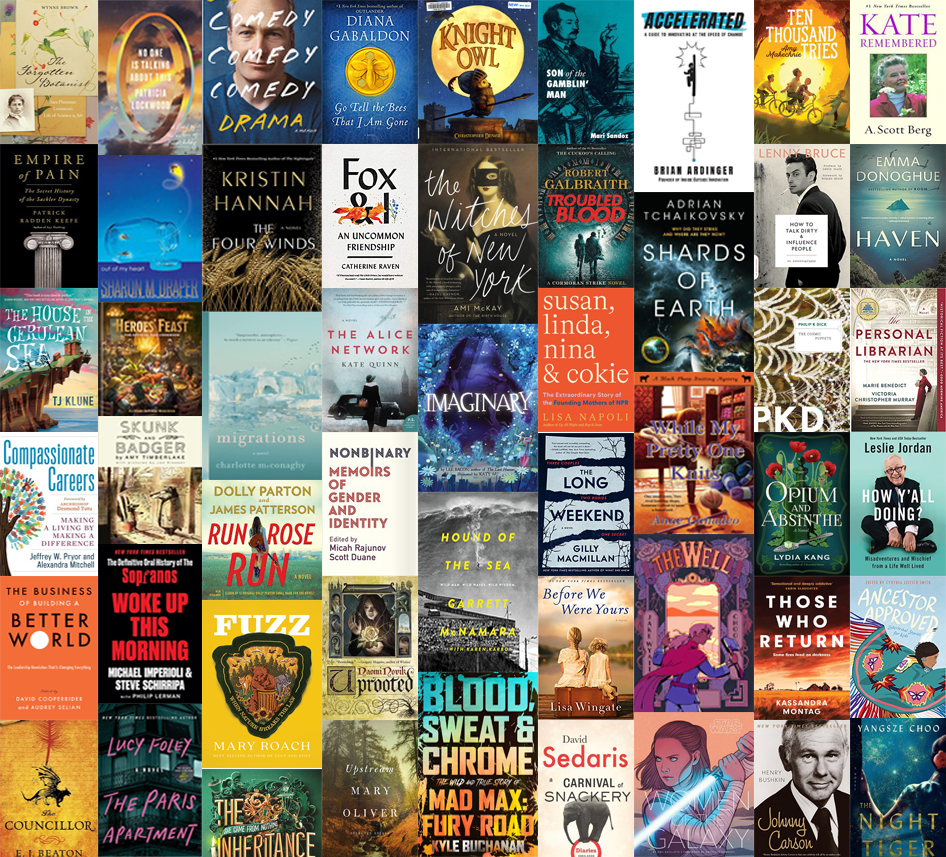
In our weekly Friday Reads blog series, a staff member at the Nebraska Library Commission posts a review of a book every Friday. Spanning all genres, from science fiction to celebrity memoirs, young adult to crime fiction, we’ve shared what we’ve read and why we’ve read it.
Former NLC staffer Laura Johnson created this series to model the idea of talking about books and to help readers get to know our staff a little better. Readers advisory and book-talking are valuable skills for librarians to develop, but they are ones that take practice. We hope that our book reviews will start a conversation about books among our readers and encourage others to share their own reviews and recommendations.
This series has been going strong for multiple years and has produced hundreds of reviews! All of these reviews are archived on the NCompass blog, or you can browse a list of reviews here.
Friday Reads, The Night Tiger by Yangsze Choo
The Night Tiger, by Yangsze Choo, reflects an exotic world, made both strange and familiar, for being set in 1930 Malay, (now Malaysia), a world of many races, including the white “foreigners” (British colonials.) The title has been selected for the Elizabeth II Jubilee list of titles, 10 books for each year of her reign. The story combines murder mystery, a quest, a ghost realm, were-tigers, and Chinese numerology, and the mythology of Malay. Oh, and a love story.
Yangsze Choo mixes exposition and action well. Her characters are interesting, her narrative goes from a young Chinese orphan houseboy, in present tense; an educated 21-year-old young woman forced to apprentice to a dressmaker, instead of continuing school, in past tense; and an English surgeon, in present tense. I found it an interesting style point, which brought Ji Lin closer as a character.
The story starts with the houseboy, Ren, 11, who is taking care of his dying master, an old, English doctor. The man lost most of his little finger in a surgery, and wants Ren to find it and bury it with his body within 49 days, or his master’s spirit will wander, forever. The Dr. lived in Malay a long time, and was especially interested in were tiger mythology, especially after a man who identified as a were tiger, called him one, too. The Dr.’s fevered dreams are haunted with images that might be seen by a tiger hunting. Ren is disturbed by this. He has repetitive dreams of his dead twin brother, which might be more than just dreams. Ren journeys to work for Mr. Acton, an English surgeon at the hospital in another town, Batu Gajah, and on the trip from the train station, learns there have been dogs eaten by a big cat, most are guessing a leopard.
Ji Lin, 20, has taken a second job dancing with strangers to help pay off her mother’s mahjong debt—exacerbated by being taken over by a loan shark. Not one of the more acceptable jobs for a young woman, at the time, but high paying. The woman who runs the May Flower Dance hall keeps things above board, there are bouncers, and only men with tickets are allowed to approach “the dance instructors.” One day, a particularly predatory man chooses Ji Lin to dance the tango, and boasts about many things, but mostly about being lucky. So while being tortured by bad dancing, mashed toes, and wandering hands, his good luck charm falls into Ji Lin’s possession. It turns out to be the old doctor’s little finger in a small specimen jar. All Ji Lin knows, is that it’s gruesome, and wants to get rid of it properly.
The path of the finger in a specimen bottle is traced with sudden deaths, near misses, and fevers, until it is finally buried with the old doctor. Along the way, a child matures, a young woman becomes engaged in a broom closet, and a murderer is captured. To be truthful, it’s so much more complicated than that, which is the fun of reading The Night Tiger.
The Night Tiger, by Yangsze Choo, Flatiron Books, (Macmillan), ISBN 9781250175458, hardcover
Friday Reads – Ancestor Approved: Intertribal Stories for Kids
This Christmas I hunted around for Native American stories for my niece and nephew. They are finally old enough to start asking questions about their culture and the color of grandpa’s skin. My dad is from the Band River Band of Chippewa at the very tip of Wisconsin. My brother and I are half Native, which makes my niece and nephew a quarter Native. We all tan pretty well.
To help the kids learn their heritage, I am reviewing Ancestor Approved: Intertribal Stories for Kids, edited by Cynthia Leitich Smith. Not surprisingly, I learned a lot from this collection of poems and short stories as well. In hindsight, I probably won’t give it to the kids until they are in middle school or at a higher reading level, but it was still a good read.
Many of the stories centered on Indian kids learning their culture through powwow celebrations and everyday life on the reservation, or elsewhere in the world. My brother and I didn’t grow up on the reservation like our dad did, but the stories still felt familiar and well-worn. I’ve been to many a powwow in my lifetime, but my niece and nephew have never seen one in person. Now they can learn the good, bad and ugly of Indian life from the safety of this book.
While some stories pass down traditional fancy dancing and our native languages, one of my favorite stories was told from the perspective of a reservation dog observing people in all their flawed and wonderful glory. If you’ve never heard of a reservation dog, nearly ever rez has got one. That dog that cannot and will not be owned by a single person. Rez dogs are cared for by and cares for all the people on the rez. Sort of like a library cat.
Even though some of these stories represent specific tribes, when you stack them all side-by-side, the similarities are unmistakable. Every language has a word for family, belonging, fear, loss, identity, and all those very human things. Having explored stories from around the world, all of our Ancestors must have all been talking to each other for a lifetime.
If you want to peer into the lives of dozens of Native cultures, try Ancestor Approved. Our history comes to life through story. These stories are real and refuse to be whitewashed.
Friday Reads: How Y’all Doing?: Misadventures and Mischief from a Life Well Lived, by Leslie Jordan
I listened to Leslie Jordan’s How Y’all Doing?: Misadventures and Mischief from a Life Well Lived, shortly after the 67-year-old actor’s October 24th death. Jordan was well known for his roles in “Will & Grace” and “American Horror Story,” but his profile shot through the roof during the pandemic. Stuck at home, he started making regular posts to Instagram to keep himself entertained. The posts were short and silly but obviously resonated, because before he knew it he had five and a half million followers and a book contract!
When describing his Instagram posting philosophy Jordan states: “On my Instagram page, I usually follow the old rule of not discussing politics and religion in company. I don’t know what I don’t know, and who would want to hear about what I don’t know? All I know is comedy and my sweet self.” And therein lies the appeal of listening to Jordan narrate the audiobook edition of How Y’all Doing? – it is a chance to spend four hours and 14 minutes in his sweet, hilarious company, listening to him tell stories in his delightful Tennessee accent.
Jordan writes about how much fun he’s had with Instagram, crediting the need to tell a story in around a minute with improving his comedic delivery: “Get to the point. Cut to the chase. No meandering around.” But he also celebrates the comedic freedom he experienced writing this book: “Who knew that writing for the printed page could send an artist soaring? To be able to tell not only the story but the backstory as well. And the story that led up to the backstory.”
Jordan’s memoir doesn’t have to be read in any particular order, since its chronology isn’t linear. Instead, most chapters are structured around a theme on which Jordan riffs, sharing stories from his life that are in some way related to that theme. In “The Bride Doll,” for instance, he talks about everything from the negative connotations attached to being a boy who loved playing with dolls, to being a man who, due to work he did in recovery programs, could walk into an American Girl doll store without shame and purchase one as a gift. “[I]t was a milestone moment,” Jordan writes. “Not one with trumpets blaring and angels singing, but a nice quiet realization that I had changed.”
It’s not until the chapter’s end that he tells the story of the bride doll he asked Santa to bring him back in 1958, when he was three. Initially, his father, “a man’s man” who died in 1967 when Jordan was 11, told his mother there was no way he was buying his son a bride doll. But on Christmas Eve, confronted with his son’s exuberant anticipation and unwilling to be the cause of his crushing disappointment the next morning, his father snuck out and procured one. “Thank you, Daddy. For having enough love for your son to buy him a doll,” Jordan writes in his conclusion. “And thank you, Don Norman [Jordan’s recovery advisor]. For helping me live a joyful, shame-free life.”
And that’s how most of the chapters unfold, including the final one, poignantly titled “”Until We Meet Again.” Jordan starts out reminiscing about the Florida vacations his family took each summer, and how bereft he felt when they ended: “It was then I realized how hard goodbyes can be.” He then pivots to the fact that even though the book is ending, it won’t really be the end because he has an endless supply of stories to tell. Knowing of his recent death, it was impossible not to choke up at his optimistic concluding words, which promise something that will now never come to pass:
So, to all my dear new friends, this is not goodbye forever. It is only goodbye for now. Goodbye till I get revved up and ready to launch into a whole bunch of new stories.
See you then.
Jordan, Leslie. How Y’all Doing?: Misadventures and Mischief from a Life Well Lived. Read by the author. Harperaudio, 2021. Audiobook, 4 hr., 14 min.
Friday Reads: The Personal Librarian
The Personal Librarian is a remarkable novel about J. P. Morgan’s personal librarian, Belle da Costa Greene, the Black American woman who was forced to hide her true identity and pass as White in order to leave a lasting legacy that enriched our nation, by New York Times bestselling authors Marie Benedict and Victoria Christopher Murray.
This book had my attention from the very first sentence, and I was so riveted that I listened to, and read, this book. The narrator of the Audible book, Robin Miles, is masterful as always. At the end of the audio book, the authors, Marie Benedict and Victoria Christopher Murray, each talked about the process of researching and writing this book, and how, as a result, they became close personal friends. This is a MUST read, so here is a little more about it:
In her twenties, Belle da Costa Greene is hired by J. P. Morgan to curate a collection of rare manuscripts, books, and artwork for his newly built Pierpont Morgan Library. Belle becomes a fixture in New York City society and one of the most powerful people in the art and book world, known for her impeccable taste and shrewd negotiating for critical works as she helps create a world-class collection.
But Belle has a secret, one she must protect at all costs. She was born not Belle da Costa Greene but Belle Marion Greener. She is the daughter of Richard Greener, the first Black graduate of Harvard and a well-known advocate for equality. Belle’s complexion isn’t dark because of her alleged Portuguese heritage that lets her pass as White—her complexion is dark because she is African American.
The Personal Librarian tells the story of an extraordinary woman, famous for her intellect, style, and wit, and shares the lengths she must go to—for the protection of her family and her legacy—to preserve her carefully crafted White identity in the racist world in which she lives. (Audible)
Friday Reads: Haven by Emma Donoghue
Before the pandemic, Emma Donoghue took a boat trip around Skellig Michael, an island off the Southwest coast of Ireland. Also known as Sceilg Mhichíl, the island became a UNESCO World Heritage site in 1996—but you might more likely know it from a little film called The Force Awakens, episode seven of the Star Wars franchise. Before Donoghue could actually set foot on the island on her second trip, travel restrictions went into effect, and she finished her research and wrote this book before visiting it again.
Haven is a fictionalized account of an early attempt to set up a monastery on the island. Three Irish monastics, who all had different paths to the religious life, set out on a boat from the Irish mainland around the year 600 to found a new holy order on the skellig. The island is both abundant and sparse, an allegory for the faith of the travelers. Donoghue goes into fascinating detail of the natural world of the island, especially the bird life, and fans of nature writing will appreciate this immersion into the physical world of the island. While the monks have different ideas about how to interact with the natural world, two of the monks, Cormac and Trian, have vowed to obey Artt, whose vision has brought them to the island. Artt’s faith, more educated and intellectual, is served well by a monastic life—but not by a natural life.
The struggle for survival, both physical and spiritual, is heart-wrenching and transformative. The narrative is both claustrophobic and expansive, which might sound like a familiar feeling to fans of Donoghue’s most famous work, Room. There are lessons for the characters, and so for the readers, about faith, about stewardship, about vulnerability and acceptance—as well as about which freedoms and responsibilities we embrace, and turn over, and perhaps wrestle back.
Here’s a fun article about how there are so many birds on the island, that when filming that Star Wars movie, it was easier to create a new monster to CGI over the birds: Porgs!
Donoghue Emma. Haven : A Novel. First ed. Little Brown and Company 2022.
#BookFaceFriday “Johnny Carson” by Henry Bushkin
Heeeeere’s #BookfaceFriday!
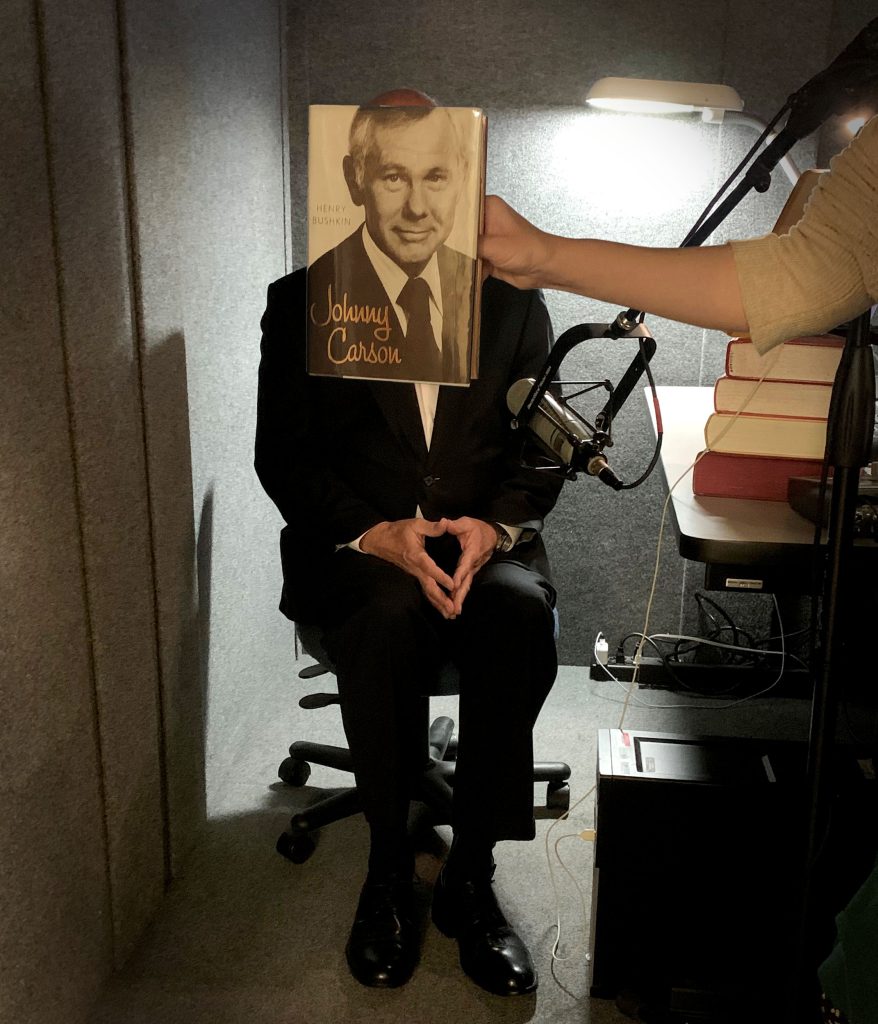
Ever wonder what the librarians at the Nebraska Library Commission do in their free time? When we aren’t ironing our cardigans or putting our grocery lists in alphabetical order (just kidding, I think?), we’re probably reading juicy celebrity biographies like this week’s BookFace selection, “Johnny Carson” by Henry Bushkin (Houghton Mifflin Harcourt, 2013). This title is also the subject of this week’s Friday Reads post, written by Information Services Director, Lisa Kelly. Library Commission staff take turns writing weekly book reviews of titles they have enjoyed (and sometimes not!) in our weekly Friday Reads series. Want to read it yourself? “Johnny Carson” is available as an ebook on Nebraska Overdrive Libraries!
“Henry Bushkin’s ‘Johnny Carson’ is that rare celebrity tell-all by an author who knows whom and what he’s talking about.”
— The New York Times
Find this title and many more through Nebraska OverDrive! Libraries participating in the Nebraska OverDrive Libraries Group currently have access to a shared and growing collection of digital downloadable audiobooks and eBooks. 189 libraries across the state share the Nebraska OverDrive collection of 21,696 audiobooks, 35,200 eBooks, and 3,964 magazines. As an added bonus it includes 130 podcasts that are always available with simultaneous use (SU), as well as SU ebooks and audiobook titles that publishers have made available for a limited time. If you’re a part of it, let your users know about this great title, and if you’re not a member yet, find more information about participating in Nebraska Overdrive Libraries!
Love this #BookFace & reading? Check out our past #BookFaceFriday photos on the Nebraska Library Commission’s Facebook page!
Posted in Books & Reading, General
Tagged Biography, bookfacefriday, Ebook, Friday Reads, Henry Bushkin, Johnny Carson, Nebraska OverDrive Libraries, OverDrive, Reading
Leave a comment
Friday Reads: Johnny Carson and Kate Remembered
When I shelved books at Beatrice Public Library, we had a separate room for biographies and all of our comfortable chairs were located there. I always wondered about the patrons that found the lives of others so fascinating, and now, I realize that person is me. Is it just one-step away from reading People magazine at your dentist office or is it something more? Since I have started reading biographies, they have become one of my favorite genres. Here are two biographies I read this summer:
Johnny Carson by Henry Bushkin
I grew up with Johnny Carson reliably making us laugh at the end of the day until his last broadcast in May of 1992 when Bette Midler serenaded him with One More For My Baby. The author is described as Johnny’s “personal legal adviser, fixer, confidant, and close friend.” Carson referred to Bushkin as his best friend. The book covers their 18-year relationship, which began when the author was 27 years old in 1970. Had the relationship not ended abruptly or acrimoniously, I wonder if Bushkin would have written this book? The author reveals Johnny’s copious generosity, his inability to be a good husband or money manager, and the psychological damage inflicted on him by his mother from which he never recovered. His mercurial temperament and his grudges were legend. This book pulled back the curtain on an icon that I would have rather left alone but through the eyes of Bushkin, I felt I got closer to the truth or at least one version of it. Despite it all, nobody hosted a show quite like Johnny and watching old clips of him still brings a smile to my face.
Kate Remembered by A. Scott Berg
I listened to Kate Remembered shortly after it was published in 2003. After I gave copies to my neighbor Mary and to my friend Vern, I thought it was time to have another listen. Incidentally, the book is narrated by the actor Tony Goldwyn who does a fair Hepburn impression. The book focuses on Berg’s friendship with Hepburn that started in 1983 and lasted until her death. Berg was Kate’s chronicler as she lavished stories upon him from her life and some episodes that I suspect she rarely shared. From the author’s book cover, “… Miss Hepburn often used our time together to reflect, an exercise in which I don’t think she indulged with anybody else.” I found Scott’s speculative answer to Kate’s question on why he thought Tracy drank so much fascinating and likely spot on. Learning about Kate through Scott’s writing, and what I hope were direct quotes of Hepburn’s, was worth a first and a second visit. After I finished, I re watched The Philadelphia Story and Guess Who’s Coming to Dinner again. Time well spent.
So what is the appeal of biographies? Because there is always more to someone’s life is than meets the eye. Triumphs and tragedies are a human condition no matter your fame or infamy. We are all broken.
Bushkin, Henry. Johnny Carson. Boston, MA; Houghton Mifflin Harcourt, 2013.
Berg, A. Scott. Kate Remembered. New York, NY. Putnam Adult, 2003.
Friday Reads: “Those Who Return” by Kassandra Montag
Set in the Sandhills of Nebraska, this mystery centers around a children’s home for troubled youths and a psychologist who is trying to start a new life. Isolated and far off the beaten path, Hatchery House, is a treatment facility for orphaned children with psychiatric disorders. Lore Webber has left a job with the FBI in Omaha and moved out west to start over, but when one of her patients at Hatchery House is found murdered her old life and her new life will collide. This closed-door murder thriller will have readers guessing until the very end. The inherent remoteness of the setting has limited the suspect pool, and no one wants to think the people they live with are capable of murder. The beautifully written descriptions of the setting honor the unique beauty and seclusion of the Sandhills. Too many people who comment on the Nebraska landscape have only ever driven through on I80, it was good to read a book that looked deeper. The characters are complex and well-written, with interesting backstories that unfold throughout the story as you work alongside Lore to solve the crime. Thoroughly well-researched and compelling, this is Montag’s second novel, her first “After the Flood” was published in 2019, and is also a favorite read of mine. I would highly recommend both.
Montag, Kassandra. Those Who Return. Quercus. 2022.
Posted in Books & Reading, General
Tagged Book Review, Friday Reads, Kassandra Montag, mystery, Reading, series, Those Who Return
Leave a comment
Friday Reads: Opium and Absinthe by Lydia Kang
It seemed good timing to read Lydia Kang’s Opium and Absinthe soon before Halloween. The vampire connection was enticing. The historical novel takes place in New York City in 1899, the year that Bram Stoker’s Dracula was published. Lucy Pembroke is found dead in an alleyway by puncture wound and drained of blood on the eve of her marriage ceremony. Mathilda (Tillie) Pembroke is Lucy’s younger sister. Tillie is determined to find the murderer. An overprotective mother and a controlling grandmother hamper her efforts. Tillie must go to imaginative and extreme lengths to escape the confines of her home to seek answers to her many questions about the murder.
Tillie’s challenges include an opium and morphine addiction that came about following a horse-riding accident. Intended to provide pain relief, addiction followed and continued. Opium and Absinthe places drug addiction as a central theme. Heroin is also notable, introduced by Bayer as a cough remedy. At the time, all were legal and commonly prescribed.
An intriguing mix of characters emerge including New York’s rich and privileged and the working class poor. The Pembroke family is among the city’s elite. The mystery unfolds at a steady pace and, at least for me, comes to a surprising end.
The book is included among CrimeReads Best Historical Fiction of 2020.
Described as among the great virtuosos of the crime genre, Lydia Kang is an author and an internal medicine physician. Her writings include historical mysteries, popular history, young adult sci fi, essays and poetry. Kang’s most recent book, Patient Zero: A Curious History of the World’s Worst Diseases, co-authored with Nate Pedersen, is a 2022 Nebraska Book Award winner for nonfiction – popular history. Kang’s The November Girl won the Nebraska Book Award for Young Adult Fiction in 2018.
Kang, Lydia. Opium and Absinthe: A Novel. Seattle: Lake Union Publishing. 2020
Friday Reads: The Cosmic Puppets, by Philip K. Dick
Ted Barton has a problem. He doesn’t exist. When he visits his old hometown, the one he left eighteen years ago, he recognizes nothing. When he visits the town newspaper and checks into their archives, he discovers his name in the obituaries: funny, he doesn’t feel like he died of scarlet fever eighteen years ago. Something is Going On, and Ted Barton is going to hang around town for the length of an expanded novella until he finds out just what that Something is.
So begins the spaced-out mystery horror of 1957’s The Cosmic Puppets, which takes a Twilight Zone-style jumpstart of one individual’s profound alienation from history and memory, and builds from there, until the whole town, then the whole universe, is involved — and the nature of reality itself is called into question. In other words, just another book by Philip K. “for now we see through a glass, darkly” Dick (1928 – 1982), the fictionalizing philosopher whose works are the source for such movies and series as Blade Runner, The Man in the High Castle, A Scanner Darkly, Total Recall, and several others.
It turns out that the town Ted Barton vividly remembers – Millgate, Virginia – is still there, but on top of it lies the consistently projected illusion that he and the rest of the townspeople currently perceive. Through strenuously concentrating on his memories, he can bring back small details temporarily, but he can’t hoist up the real town alone: it’s a mass delusion that must be countered with a collective effort of memory.
Alliances are formed and sides taken, snakes and spiders fight with bees and moths, and primordial forces that predate the physical universe rise and join the psychic tug of war. Dick wrote most of this book in 1953, making it one of his first efforts, but PKD fans will notice that many of the classic preoccupations he explored in later books and writings — such as the 1978 speech “How to Build a Universe That Doesn’t Fall Apart Two Days Later” — are already in place, especially the old philosophical question, “what is real?
A warning to puppet enthusiasts and ventriloquists: puppets do not play a role in the story, except perhaps metaphorically; the original title of The Cosmic Puppets was A Glass of Darkness. This title is available through hoopla Digital via your local library (I read mine through Lincoln City Libraries) and also the Internet Archive, as well as well-curated used bookstores everywhere.
Dick, Philip K. The Cosmic Puppets. Boston: Mariner Books, 2012.
Top image: Cover of Centipede Press edition, 2020
